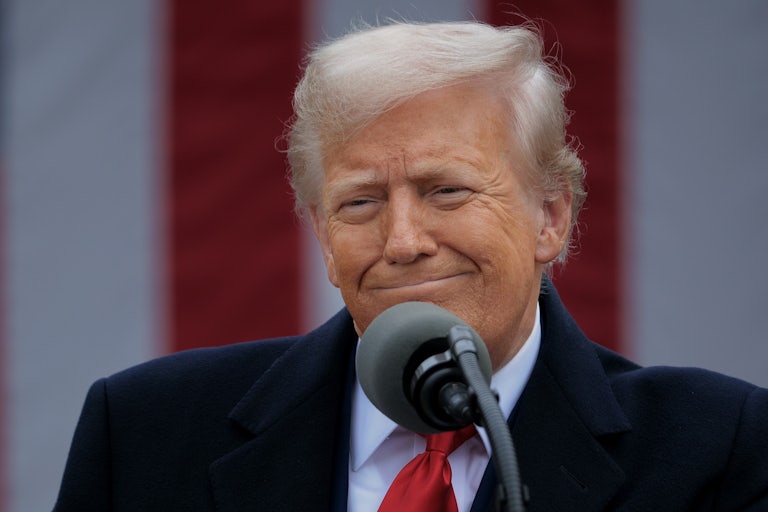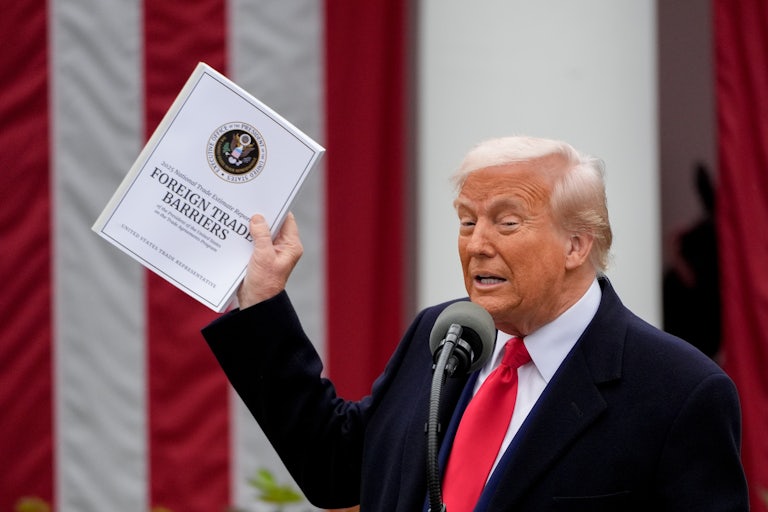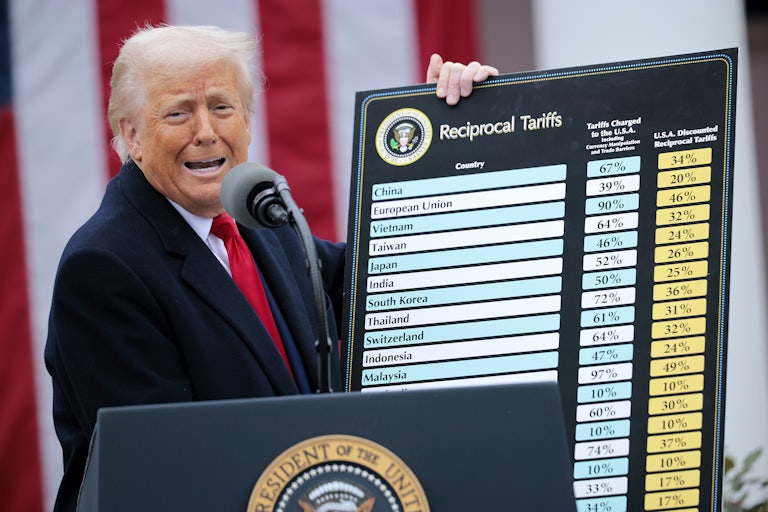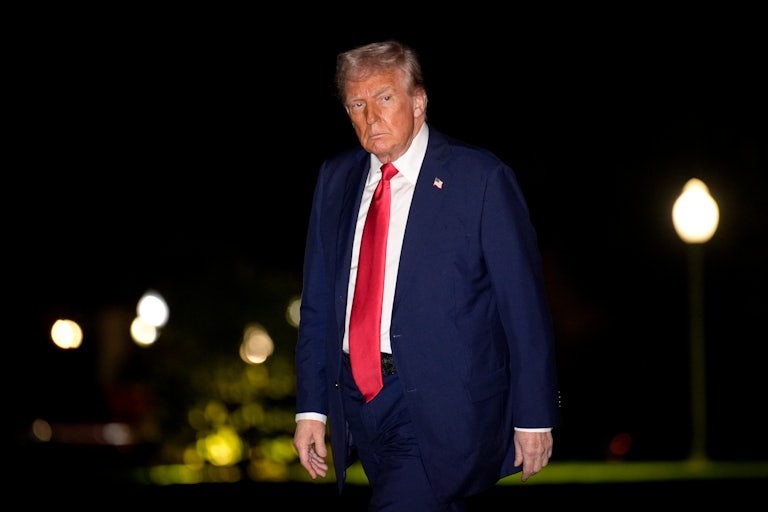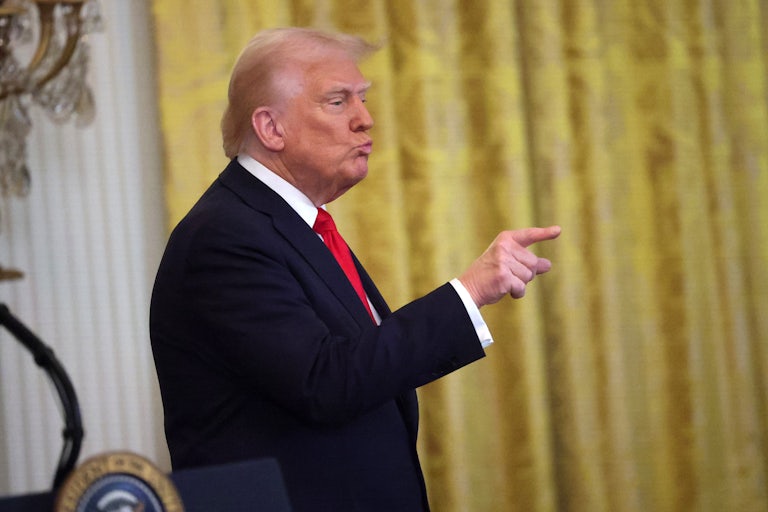Here’s How Trump Calculated His Tariffs—and It’s Ridiculous
The math just isn’t mathing.
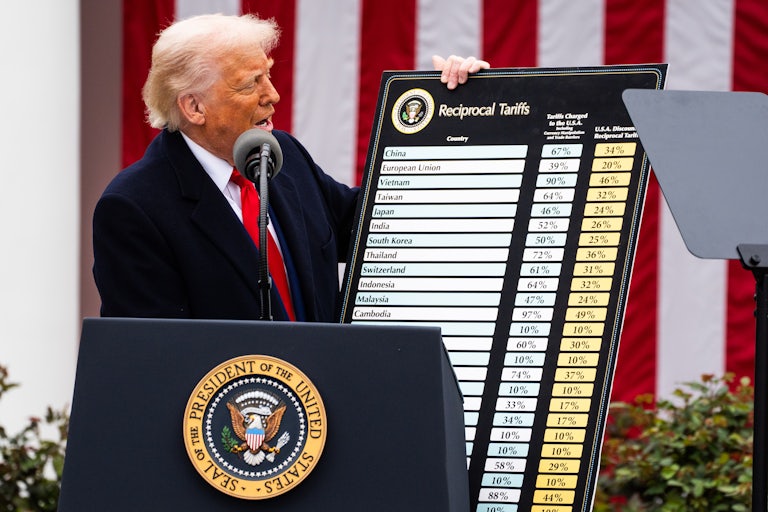
The Trump administration seems to have destroyed global economies overnight while misunderstanding basic economics.
In the wake of Donald Trump’s tariff announcement Wednesday, former New Yorker financial writer James Surowiecki pointed out that a column on Trump’s tariff sheet labeled “tariffs charged to the U.S.A.” was likely founded on bad math.
“They didn’t actually calculate tariff rates + non-tariff barriers, as they say they did. Instead, for every country, they just took our trade deficit with that country and divided it by the country’s exports to us,” Surowiecki argued. “So we have a $17.9 billion trade deficit with Indonesia. Its exports to us are $28 billion. $17.9/$28 = 64 percent, which Trump claims is the tariff rate Indonesia charges us.”
“What extraordinary nonsense this is,” he added.
That would mean that the Trump administration imposed earth-shattering tariff hikes on the rest of the world without looking at the whole picture. Mainly, that the administration calculated the tariffs charged by other countries by only looking at goods provided, rather than the combined value of goods and services—something that “most economists seem to think is an odd way to calculate tariffs,” according to BBC Verify’s Shayan Sardarizadeh.

The White House initially refuted the tariff theory. White House Deputy Press Secretary Kush Desai posted on X that “we literally calculated tariff and non tariff barriers.” But in an attempt to prove his point, Desai grabbed a formula from the US Treasury website that actually proved Surowiecki’s.
Sardarizadeh broke it down. “∆τᵢ = (x-m) / (ε x φ x m),” he shared. “The formula includes ‘x’ for exports and ‘m’ for imports.”
“But it also has ‘ε’ for ‘price elasticity of import demand’, set at 4 by the Treasury; multiplied by ‘φ’ for ‘elasticity of import prices’, set at 0.25 by the Treasury, which means they basically cancel out each other as 4 x 0.25 = 1,” Sardarizadeh continued. “So, in effect, all you’re left with in the formula is exports - imports / imports, which is what X users and journalists had accurately pointed out all along.”
But the administration’s bad math only matters so much to the tariff-heavy agenda. Even in countries where the trade deficit was less than 10 percent, or even in countries where there was a surplus, Trump still tacked on a 10 percent tariff.
